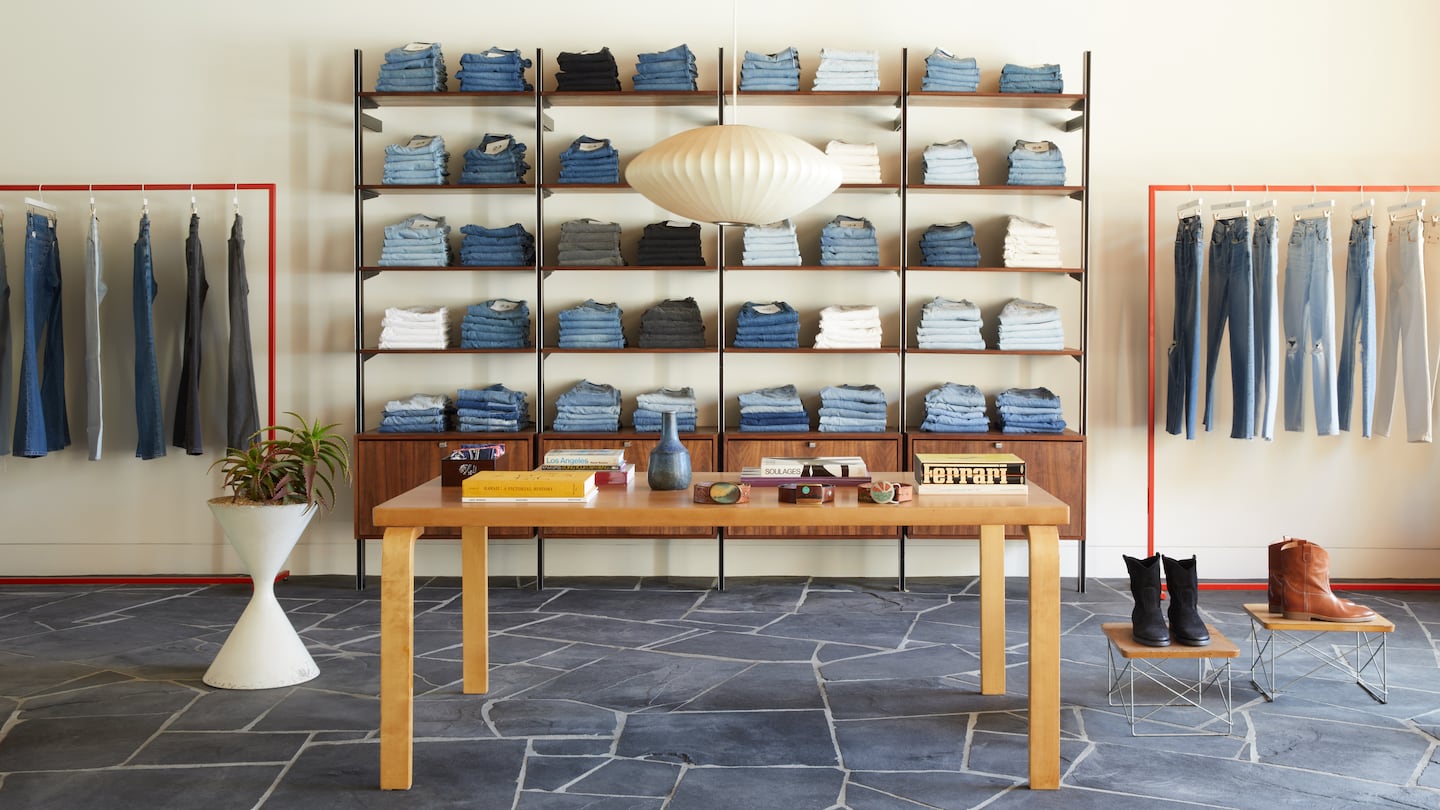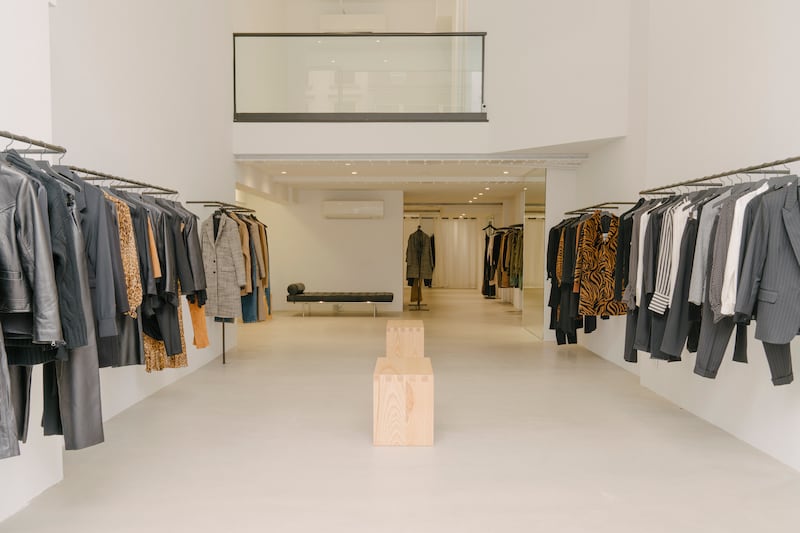
The Business of Fashion
Agenda-setting intelligence, analysis and advice for the global fashion community.

Agenda-setting intelligence, analysis and advice for the global fashion community.

If the lockdowns exposed the flaws of a brick-and-mortar approach to retail, designer Nili Lotan took away the opposite lesson.
At the height of the pandemic, her namesake label’s East Hampton store was so busy that it made up for the lost revenue from her two closed stores in Manhattan. The experience led her to invest in more stores wherever her wealthy clientele congregates: one opened in Aspen in June, another is planned for Palm Beach later this year and three more locations are in the works for 2022.
“Every store that I don’t open, I’m leaving money on the floor,” Lotan said.
Her boutiques are among the thousands of new storefronts in the US announced this year. As of late August, there were 4,616 new stores announced among major US retailers, nearly 50 percent more than what was announced in all of 2020, according to Coresight Research. It’s a decisive recovery for physical retail that would have seemed all but unimaginable a year ago, when many in the industry feared that consumers who shopped online in record numbers during the lockdown would be slow to return to stores.
ADVERTISEMENT
Instead, retailers large and small have reported a boost in foot traffic, and some have reported the e-commerce wave has started to recede. American Eagle Outfitters on Thursday said its e-commerce business dipped 5 percent in its second quarter compared to last year, but its overall revenue rose above 2019 levels. Not every retailer is seeing an uptick, with department stores generally lagging off-price and sportswear retailers, analysts say.
Placer.ai, a research firm that tracks foot traffic, estimates that overall, apparel stores saw 5.4 percent more foot traffic in the third week of August compared to the same period in 2019, even as Covid-19 cases surged in the US.
“Is there a wider recovery happening? I think the answer is yes,” said Ethan Chernofsky, vice president of marketing at Placer.ai. (Others have a less-rosy assessment; Cowen estimates foot traffic is still down about 10 percent).
But it remains to be seen whether stores can sustain their momentum. Consumers have extra cash to spend on dresses and pants: many are still spending last year’s stimulus checks, and money that would have otherwise gone toward travel or entertainment has benefited sectors like apparel. These effects are likely to taper as pandemic benefit programmes wind down and spending patterns return to normal. Not to mention the industry-wide issues that sent many physical retailers into bankruptcy in the decade leading up to the pandemic. Plenty of consumers had abandoned dated stores to shop online well before Covid-19 forced their hand.
Digital newcomers are driving much of the physical retail revival. In their filings to go public, Allbirds and Warby Parker pointed to retail expansion as key to their plans to scale, with stores both driving revenue and building brand awareness. Warby Parker said in its prospectus that it wants to operate more than 900 stores.
However, many traditional fashion companies have also reexamined their physical retail strategies during the pandemic. Often, that means closing unprofitable stores, as well as opening new ones that incorporate e-commerce capabilities such as curb-side pickup, virtual styling and experimenting with new formats such as smaller locations or shop-in-shops.
“What’s happening right now is setting up the stage for a new chapter of retail,” said Barrie Scardina, head of retail, Americas, at real estate brokerage Cushman & Wakefield. “Our economy is strong, consumers are spending money and there are a lot of emerging opportunities across new sectors of business.”
The Right Store
ADVERTISEMENT
To hold onto recent retail success, simply opening a store isn’t enough. Brands must create a compelling and convenient experience for the shopper, whether that means having localised store features or offering in-store pickup.
Denim label Re/Done opened its first brick-and-mortar location last year, and is on track to have five locations by early 2022, including one in Aspen, like Nili Lotan. So far, the success of its initial stores has exceeded expectations, according to co-founder Sean Barron, in part due to the stores’ ability to engage the consumer. For instance, in each of its three current locations, Re/Done features a “marketplace” of vintage goods, from jewellery to home goods, which are all available for purchase.
“People love that we do this because it gives them an insight into what we like and other items that are part of our ethos,” Barron said. “You can’t just open a store and put normal fixtures in there and hope it works — I think the success is in the touch and experience.”
Size also counts, and in many cases, the smaller, the better. Re/Done’s store in Malibu is a “200-square-foot box,” Barron said, and so far, it’s been just as effective in driving sales per square foot as its full-line, 1,200-square-foot location. Target has had success with its small-format stores in recent years, and other major retailers like Bloomingdale’s and Express are experimenting with their own shrunken locations.
Whereas retailers of previous decades required thousands, sometimes hundreds of thousands, of square footage to showcase the full slate of their offerings, consumers today can find that full catalogue online. In fact, consumers will often visit a store after they’ve already checked out what’s for sale on the brand’s website. Those shoppers don’t want to walk through row after row of products; instead, they crave a more intimate experience — especially when that experience is combined with convenient services like the ability to pick up or return online orders.
The Best Locations
In addition to store design, it’s critical for retailers to deploy the right geographical strategy. Different markets are recovering at different paces — something for retailers to consider when looking to expand. The American Sun Belt region, which is the southernmost strip of the country, is outpacing recovery in major cities such as New York and San Francisco, according to Cushman & Wakefield’s Scardina.
Leap, a start-up that helps brands operate retail spaces, has observed the same. While retail rents in New York City continue to slip, coveted properties in Scottsdale, Ariz., Austin or Dallas now command higher prices than they did in 2019, according to Leap co-chief executive Amish Tolia.
ADVERTISEMENT
The savviest players should also look at data to inform their decisions, according to Scardina, including the “facts, trends and migration caused by Covid,” she said.

Chernofsky pointed to the growing number of older millennials with families who have moved out of major cities and into the suburbs in the past 18 months — and the younger, Gen Z consumers who have moved into metropolitan areas.
“These are the types of changes that create really rare opportunities to cash in on first-time demand,” he said.
Lifestyle changes caused by the pandemic are also why brands like Nili Lotan and Re/Done are opening stores in vacation hotspots like Aspen. Prior to the pandemic, Lotan had considered LA, Chicago, San Francisco and Washington, DC for new locations.
“One of the things I’ve been doing is strategically putting my stores in neighbourhoods because I like the idea of me coming in to serve a woman rather than a woman having to go and look for me,” she said.
Ultimately, when it comes to store locations, the best decision-making component boils down to a gut feeling. That’s at least according to Jay Luchs, a retail broker and vice president at Newmark.
“Sometimes people who look at data alone miss the boat,” he said. “If it’s a sophisticated area, with good demographics, I don’t know about overanalysing. There are only so many streets in each city like that, and once it’s gone it’ll take years to find another one.
The rent deals ubiquitous at the height of Covid-19 last year have already begun to dissipate. Despite still-rampant vacancies citywide in Los Angeles and New York, Luchs is seeing multiple offers on coveted spaces again for the first time in months.
Related Articles:
Tapping Into the Future of Physical Retail
6 Ways the Pandemic Has Changed How People Shop
The Case for Opening a New Store Right Now
The rental platform saw its stock soar last week after predicting it would hit a key profitability metric this year. A new marketing push and more robust inventory are the key to unlocking elusive growth, CEO Jenn Hyman tells BoF.
Nordstrom, Tod’s and L’Occitane are all pushing for privatisation. Ultimately, their fate will not be determined by whether they are under the scrutiny of public investors.
The company is in talks with potential investors after filing for insolvency in Europe and closing its US stores. Insiders say efforts to restore the brand to its 1980s heyday clashed with its owners’ desire to quickly juice sales in order to attract a buyer.
The humble trainer, once the reserve of football fans, Britpop kids and the odd skateboarder, has become as ubiquitous as battered Converse All Stars in the 00s indie sleaze years.